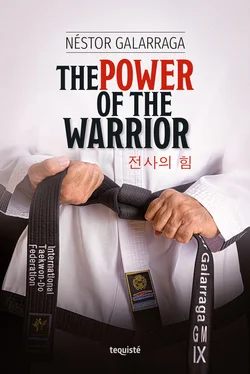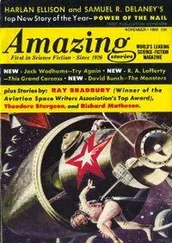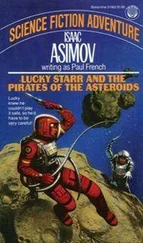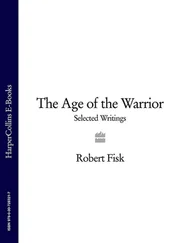La argentinidad1 and Taekwon-Do
1La Argentinidad refers to the essence or quality of what is distinctive of the Argentine people, their typical features.
Like in many other countries, during the founding and expansion process of Taekwon-Do, on the sunny morning of June 22 of 1967, three Koreans —Han Chang Kim aged 29, Nam Sung Choi aged 31 and Kwang Duk Chung aged 18— arrived at the port of Buenos Aires, Argentine Republic, in a 28.000 tons Dutch cargo ship called Boesvian. Kim had a BA in International Relations, a man culturally and academically educated; he spoke a little Spanish because he had picked that language from the choices of foreign languages at the university (he says that he does not speak it well because to master a language you need to be born in the country of origin). He had been promoted to 4th Dan category by General Choi Hong Hi, but his instructor was Master John Chan Kim, who taught him the ITF techniques in the General´s house. The destination was Argentina; the mission, to promote Taekwondo in South America, which he achieved beyond the expectations. He was the most graduated of the three and the one with the most ascendancy, but he always recognized G. M. Choi, Nam Sung and G. M. Chung, Kwan Duk as his peers and fellow travelers, sharing with them the label of pioneers. However, the Taekwon-Do instructor, ITF style, was G. M. Kim; he was the only one who knew the ways.
There are two curious facts that I would like to point out. The first is that G. M. Kim had no visa to stay in Argentina, although that was his final destination. When they arrived in Rio de Janeiro, his desperation was so evident that an older man approached him and asked him what the matter was. He was a well-travelled man who knew the migration and customs authorities; as a result, by the time they were leaving Brazil —particularly the Port of Santos— Kim already had the visa stamped in his passport. Mrs. María Barranco de Grasso was expecting him in Buenos Aires and Kim recognizes her as his second mother. The Pastor of Mrs. Maria´s Church had arranged their introduction, a man who worked trying to find proper homes for immigrants coming from Korea during those years. They lived three years in her house in the eastern side of Banfield, and she treated them as if they had been their own children. The second fact to be mentioned is that Kim was not the first taekwondoin to arrive in South America; Myung Duk Sun arrived in Paraguay in 1966. But his attempts to promote the discipline were quite limited because, soon after his arrival, he focused on promoting the religious movement called the Unification Church (the Moon sect). There are two original and emblematic Korean flags: one is under the possession of Master Omar Reeberg, the one Kim brought from Korea; and the other, the one that Kim historically had in his gym, is today in Master Marcelo Minguila´s gym.
Argentina incorporated Taekwon-Do rapidly as part of its culture. Already in 1975, the pioneer masters had developed a structure with more than 100 instructors dedicated to teaching the discipline and delivering ITF Taekwon-Do classes to more than 10.000 students in the country (according to the prologue of the program from the First ITF Taekwon-Do National Tournament of October 11 and 12 of 1975).
Up until 1971, there was only one Taekwon-Do and it was ITF but, in August of that year, due to irreconcilable differences with the South Korean dictatorship, the International Federation met and it was decided that the ITF headquarters were to be moved to Canada, and General Choi was politically exiled from that country. Canada was chosen because Taekwon-Do was highly developed there and because, in 1976, the Olympics were going to be organized in Montreal and that was the movie that played in General Choi´s head regarding ITF Taekwon-Do: to reach the maximum international sporting scenario. Nobody would have imagined that General Choi would die long after without seeing ITF Taekwon-Do turned into an Olympic sport or himself proclaimed as true founder of a discipline that gave his country so many satisfactions, placing Korea on the map, worldwide acknowledging and positioning it within different areas of the arts, culture and sports. No even the last samurai in Japan, Saigo Takamori, achieved this much; he was considered a traitor for those who deviously advised the emperor on how to transform Japan. Yet, some years after his death, he was recognized by the emperor and remembered with honors by the Japanese people as a tragic hero, misinterpreted by the government. Today he is considered by the majority of the historians as the authentic last samurai.
In 1972, as Korea could not control ITF, it decided to create, in six months, a new sport with different regulations but with the same name. They created the World Taekwondo Federation WT and elected an agent of the KCIA (Korean Central Intelligence Services), who was working in the United States, Kim Ung Yong, as president of this new organization. As from that moment, the WT was economically and strategically supported by the United States and a deliberate race to get to the Olympics started and pushed ITF aside, but the true objective was to crush Choi and to steal his ITF instructors (ITF stands for International Taekwon-Do Federation). As of 1972, the year were a new sport was created by Korea by using an existing name, ITF has been used worldwide to name a style and to distinguish it from WT; however, it is actually more than that: ITF is probably the strongest cultural expression that Korea has had outside its borders.
The ITF conducted the first Taekwon-Do World Championship in Montreal, Canada, on October 4 and 5 of 1974, with the participation of 450 competitors from 27 countries. From that moment onwards, consecutive world championship competitions were organized every three years. However, on July 17 of 1980, during Session 83, the International Olympic Committee (IOC) recognized WT Taekwondo and invited them to participate in the Seoul 1988 Olympic Games, and this was a catastrophe for General Choi and all ITF Taekwon-Do followers. As from that moment and despite ITF Taekwon-Do being the original discipline, practiced in more than 100 countries, ITF taekwondoins have been persecuted, victims of all kinds of sport-related discrimination and officially ignored by all the international sports federations, every time, and this goes on up to the present time, even when comparing ITF with WT —as I have said countlessly when asked about it— is like comparing Basketball to Volleyball. I remember clearly the letter sent by General Choi to the IOC before WT was declared an Olympic sport. Let us observe closely the details of this historic document:
September 29 of 1981
To: Executive Board of the International Olympic Committee
Subject: Why should the International Tae Kwon Do Federation be recognized by the International Olympic Committee?
Initially, I began an analytic study of the Japanese and Korean martial arts, with the intention to promote health, which is the most precious asset of humanity, and develop power to preserve freedom and justice, thus contributing with peace in the world; also, with the purpose of leaving a noble spiritual legacy and advanced techniques for the generations to come.
Thirty five years have gone by; I have dedicated my youth to the creation and distribution of Tae Kwon Do throughout the world.
However, I want to point out that the purpose of this letter is not just a claim to be given credit for the creation of Tae Kwon Do, which is under my possession.
I am morally and emotionally bound to speak against the abuse the dictatorship exerts over this art as its political instrument. I cannot ignore the degradation of its techniques and its image having been tainted by imitators.
Today, I want to provide the truth to you, behind which it can be found a cruel battle fought by my dear students during the past ten years to keep its orthodoxy.
Читать дальше












